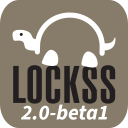6.2. Using the LOCKSS Crawler Service#
Note
This section is under construction.
6.2.1. Accessing the Web User Interface#
Note
Currently the crawler service is run as part of the poller service.
If you are already connected to the Web user interface (UI) of another component of the LOCKSS System, click Crawler Service in the top-left menu.
Alternatively, if your primary hostname is <HOST>, you can use your browser to connect to the LOCKSS Configuration Service Web user interface (UI) at http://<HOST>:24631.
Enter your Web UI username and password to login if prompted.
6.2.2. Monitoring Crawl Status in the System#
The Crawl status of all configured AUs is available in the Archival Unit table
In the top-right menu, click Daemon Status.
Open the control in the middle of the screen that says Overview and select Archival Units:guilabel: from the drop down menu.
If prompted, enter your Username and Password again.
It will take a bit of time for the next screen to appear while the AU list is being built.
The Archival Units screen lists statistics for each configured AU
the Last Successful Crawl column provides a timestamp of the most recent sucessful crawl.
the Last Crawl Start column provides a timestamp of the last attempted crawl.
the Last Crawl Result column provides the exit status of the last attempted crawl.
6.2.3. Causing an Archival Unit to Crawl#
Archival units (AUs) that have been added to the system for preservation crawl periodically, but you can cause an AU to crawl on demand:
In the top-right menu, click Debug Panel.
Select an AU in the AU Actions: select AU drop-down list.
Click the Start Crawl button.
If the AU has crawled recently, you will be prompted to confirm that you wish to override the usual recrawl interval by clicking on the Force Start Crawl button.
6.2.4. Crawl Status Screen#
To inspect the state of crawls, access the Crawl Status screen:
In the top-right menu, click Daemon Status.
In the center drop-down list, select Crawl Status. Alternatively, in the center overview, click on the second line, which says "N active crawls".
6.2.4.1. Top-Level Crawl Information#
The top left of the Crawl Status table contains the number of active, successful or failed crawls, and a countdown until the next time the system will look at the AUs being preserved and pick some that are ready to crawl or recrawl.
6.2.4.2. Crawl Status Entry#
Each line in the Crawl Status table contains:
The name of the AU
The type of crawl
The start time of the crawl
The duration of a finished or in-progress crawl
The status of the crawl
The number of bytes fetched over the network as part of the crawl
The number of URLs fetched as part of the crawl
The number of URLs parsed for more links
The number of URLs remaining to be fetched as part of this crawl
The number of URLs encountered as part of this crawl but excluded from being fetched
The number of URLs fetched as part of the crawl, that received an HTTP Not Modified response
The number of URLs that caused errors as part of this crawl
The number of different content types encountered as part of the crawl
Most of these values can be clicked to see a list of the corresponding objects.
